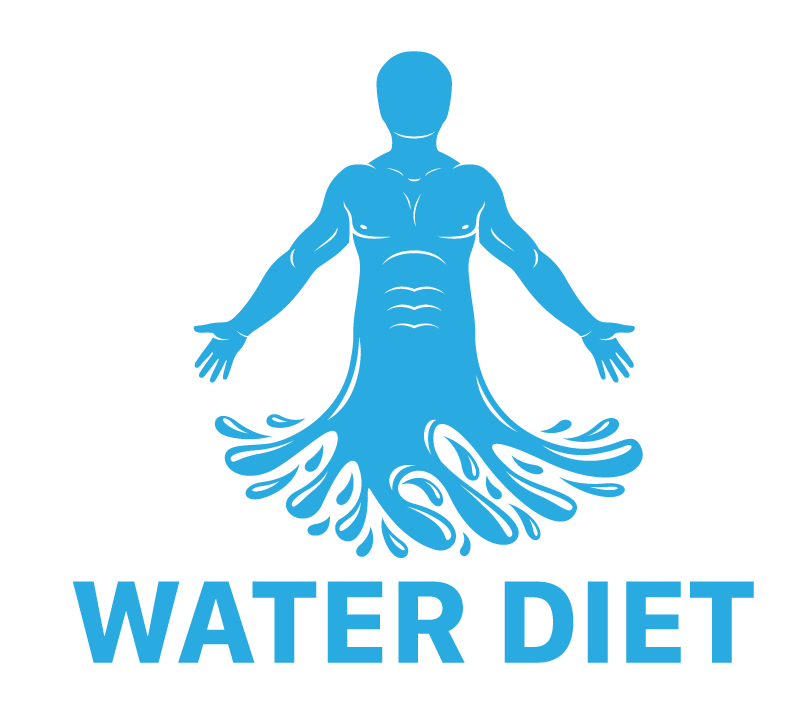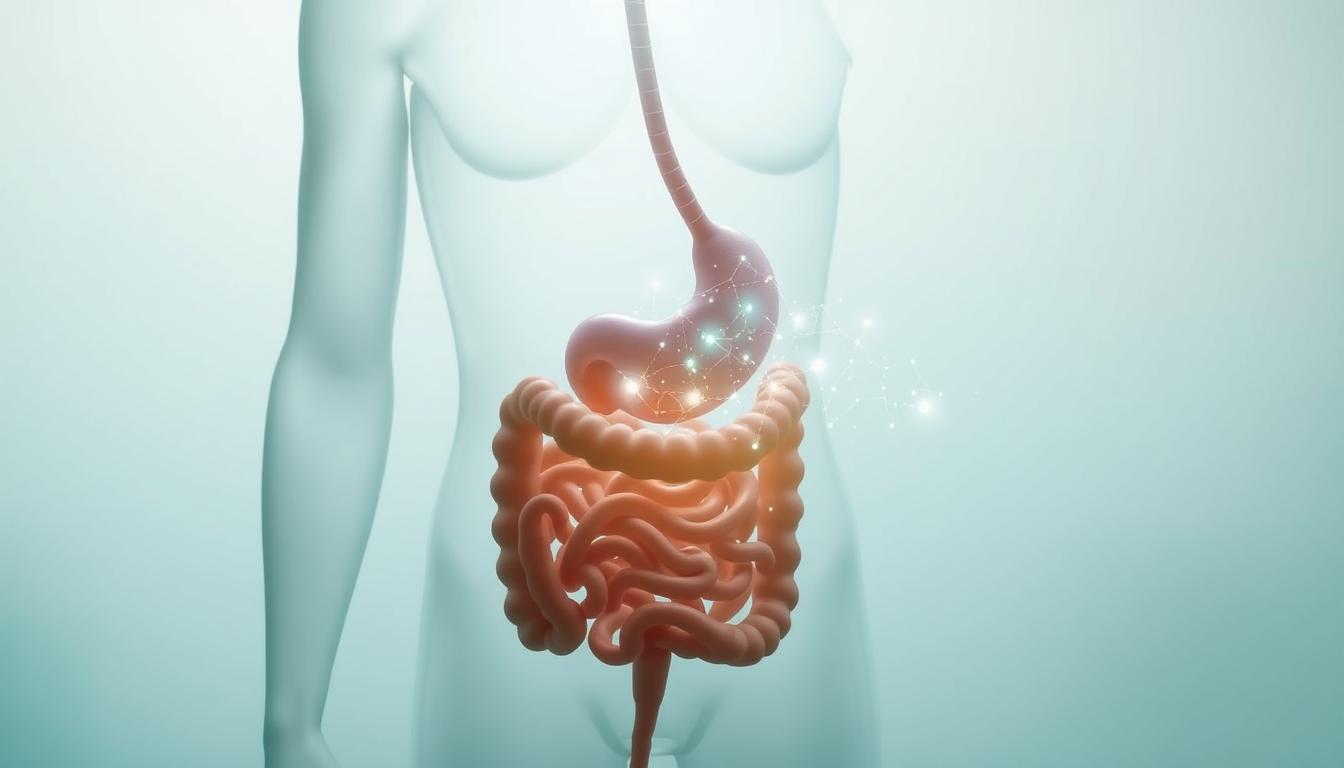Embarking on a journey towards wellness and simplicity, many individuals are turning to the ancient practice of water fasting—a method where no food is consumed, and only water is ingested. In the pursuit of understanding water fasting diet benefits, one might consider this as a path to potential weight loss, deeper spiritual reflection, or as a proactive measure against certain health ailments. In this guide, we’ll unveil how to start water fasting, assess water fasting results, and devise a strategic water fasting schedule to optimize this intriguing dietary choice.
Undertaking water fasting requires a thoughtful approach, from meticulous preparation to the steady reintroduction of foods post-fasting. To help navigate these waters, we present a comprehensive how-to guide for water fasting designed with your safety and success in mind. Let’s dive into this simple yet profound dietary venture, ensuring you’re well-informed and ready to reap the possible rewards that water fasting can bring into your life.
Key Takeaways
- Understanding the potential benefits and safe application of a water fasting diet.
- Strategies for starting a water fast, including preparation and scheduling.
- Anticipating and evaluating the results of water fasting for personal objectives.
- Guidance on implementing a water fasting schedule that balances safety with efficacy.
- Comprehensive insights to help individuals embark on a water fast with confidence.
Understanding Water Fasting Diet Basics
The practice of water fasting is not a novelty of the modern health and wellness movement but a ritualistic tradition embedded in human culture. Its resurgence speaks volumes about the inherent human desire to return to foundational self-care practices that echo ancestral wisdom. As such, water fasting has become more than a trend, representing a profound commitment to both physiological and spiritual rejuvenation.
Water fasting, in its essence, demands the abstinence from all food, with individuals consuming nothing but water throughout the duration of the fast. To grasp the full benefits of water fasting, we must look both to the scientific explanation of its impact on the body as well as to the historical and spiritual motivations that have sustained such a practice over millennia.
Definition and History of Water Fasting
Throughout the annals of history, we find that various civilizations and religious traditions have embraced forms of fasting, particularly fasting that involves abstaining from solid foods while allowing consumption of water. This historical practice of fasting served both spiritual and disciplinary functions and is observed across different cultures and time periods with unique nuances pertaining to each context.
How Does Water Fasting Work in the Body?
Biologically, water fasting initiates a metabolic state where the absence of food intake triggers the body’s intrinsic mechanisms for survival and longevity. One of the key processes activated during this state is autophagy in fasting, where the body efficiently degrades and recycles cellular debris and dysfunctional proteins. This biological renovation is thought to contribute to the improvement of various health conditions, bolstering the body’s resilience against age-related ailments.
Spiritual and Health-Driven Motivations for Fasting
The impetus behind choosing to fast can be as varied as the individuals who practice it. For some, it’s the pursuit of spiritual fasting, a path towards greater mindfulness and inner clarity. For others, it’s about fasting for health improvement, a way to confront metabolic issues, encourage weight loss, or possibly enhance longevity. The confluence of these motivations demonstrates that water fasting is not merely a physiological challenge but also a conduit for personal transformation and awakening.
To illuminate the discussion further, the embedded image below captures the serene essence of a water fast, visualizing the simplification of one’s lifestyle and nourishment to the most elemental substance—water.
In modern times, as we continue to explore the myriad ways to maintain and improve our health, the intersection of ancient fasting practices with contemporary scientific understanding promises a rich terrain for exploration and personal growth.
Preparation and Safety Measures for Water Fasting
Preparing for water fasting is a crucial step that sets the foundation for a safe and healthy experience. This preparation involves several key actions, and it’s important to approach this time with both mindfulness and an awareness of the needs and limits of your body.
Safety tips for fasting echo the necessity of a gradual approach. As you gear up for a period of not eating, reducing your food intake can help ease the body into a fasting state, potentially reducing the shock to your system. Additionally, here are some water fasting precautions to consider:
- Consult with a healthcare provider to ascertain personal health and readiness for fasting.
- Select a time when physical demands are low, allowing the body to conserve energy.
- Ensure your environment is stress-free and conducive to the changes your body will experience.
It’s also vital to stay hydrated during the fast; fasting safely means maintaining an adequate intake of water. Specifically, mineralized water should be consumed to replenish the body’s stores of essential minerals that might be lost in the absence of food.
Let’s delve into a systematic guide for appropriately preparing for a water fast with a table showing a comparison of preparatory steps against common oversights.
| Preparatory Steps | Common Oversights |
|---|---|
| Seek medical advice to understand potential risks and benefits. | Ignoring personal health conditions that could be exacerbated by fasting. |
| Plan your fasting period during a less busy, low-stress time. | Choosing a time when you’re too active can lead to fatigue and health issues. |
| Gradually reduce food intake a week before starting your fast. | Drastic cessation of food intake can cause stress to the body. |
| Ensure access to quality mineralized water for hydration. | Consuming insufficient water or not replenishing with mineralized options. |
| Prepare mentally for the challenges of fasting. | Underestimating the psychological impact of fasting. |
Remember, the goal of these measures is not only to survive without food but to ensure the fasting experience is as beneficial and safe as possible. Therefore, due diligence in preparing for water fasting is as integral as the fasting process itself.
Who Should Avoid the Water Fasting Diet?
While the water fasting diet may appeal to many seeking health benefits, it is essential to acknowledge the risks of water fasting. In particular, fasting is not universally appropriate and can pose significant health dangers to specific groups.
Health Conditions Incompatible with Water Fasting
Individuals with certain health conditions should steer clear of the water fasting diet due to the potential exacerbation or onset of serious water fasting risks. Those with underlying heart conditions may find that fasting exacerbates cardiac issues due to changes in electrolyte balance and fluid status. Equally, it is not recommended for persons with type 1 diabetes, given fasting’s potent effects on blood glucose levels. Furthermore, individuals dealing with uncontrolled migraines may find fasting triggers severe episodes, complicating their condition.
Risks for Specific Demographics
Specific demographic groups also face heightened water fasting risks. It’s widely advised that children and adolescents avoid fasting, as their bodies are still developing and require consistent nutrition. Similarly, adults over the age of 75 are more susceptible to the risks associated with nutrient deficiencies and dehydration. Also, significant caution is advised for anyone with a history of eating disorders, given the potential for fasting to trigger harmful behaviors.
Consulting Healthcare Professionals Before Starting
Medical advice for fasting is not just a recommendation but a necessary step for anyone considering a water fasting diet. Healthcare professionals can provide individualized assessments and guidance, addressing questions such as who should not fast and whether certain health risks apply. The necessity for supervision is particularly acute for those with pre-existing medical conditions, as fasting without expert oversight can be dangerous and even life-threatening.
| Population Group | Reason to Avoid Water Fasting |
|---|---|
| Underweight individuals | Risk of further detrimental weight loss |
| Those with heart conditions | Potential exacerbation of cardiac issues |
| Individuals with type 1 diabetes | Risks related to dysregulation of blood glucose |
| People with uncontrolled migraines | Fasting may trigger severe migraine episodes |
| Pregnant or nursing women | Need for consistent nutrition for mother and child |
| Children and adolescents | Potential interference with growth and development |
| Adults over 75 | Increased vulnerability to fasting-related health risks |
| Individuals with eating disorders | Possibility of triggering disordered eating behaviors |
Procedures During the Water Fasting Diet
Embarking on a water fasting journey is deeply personal and, while simplicity is at its core, adhering to a specific water fasting protocol is crucial. The fasting process involves a series of measured steps and considerations to safeguard your well-being throughout this introspective path. Fasting can be an enlightening and transformative experience when managed with careful attention to the body’s cues and a solid understanding of the fasting tips essential for success.
Central to the fasting process is the complete abstinence from food, supplemented by a regular intake of water—typically 2-3 liters daily. This not only facilitates the purifying goal of the fast but also sustains vital physiological functions and helps in managing the fasting period. It is a delicate balance, one that navigates between the profound stillness of the fasting state and the body’s underlying hydration needs.

Initiates are often advised to eschew strenuous activities during the water fast, conserving energy and maintaining a tranquil state conducive to the fasting objectives. This managing of the fasting period includes dialogue with a healthcare provider who can offer personalized advice on the appropriate duration of the fast and recommend suitable activities that align with the individual’s health status and fasting goals.
Preparation, oversight, and gradual reintroduction of foods post-fast are integral components of a successful water fasting experience. The table below highlights key aspects of the water fasting process and provides practical tips to optimize the journey.
| Aspect of Water Fasting | Considerations for Optimizing Fasting |
|---|---|
| Duration of Fast | Personalize based on individual health and lifestyle, with input from healthcare providers. |
| Daily Water Intake | Aim for 2-3 liters per day to stay hydrated and support kidney function. |
| Physical Activity | Limit physical exertion to conserve energy and maintain focus. |
| Mental Preparation | Ensure mental readiness and create a supportive environment for reflection. |
| Hydration Quality | Opt for mineralized water to replenish electrolytes lost during the fast. |
Through observing these guidelines and water fasting tips, one can enhance the fasting journey, elevating it from a mere dietary constraint to an enriching, mindful practice. It is a process not just of abstinence, but of reconnection with the foundations of vitality—water itself becoming the medium for a profound internal exploration.
Navigating the Post-Fast Regimen
As the deliberate stillness of the water fast concludes, setting the stage for nourishment reintroduction becomes the forefront of post-fast nutrition. Transitioning back to a nourishing meal plan is integral to support the body’s adapted physiological state. Focus and care in reintroducing food after a water fast are essential in maintaining the benefits garnished during the fasting period while steering clear of potential complications.
Reintroduction of Foods After Fasting
Emerging from a fasting state calls for mindful reintroduction of foods in gradual, well-considered increments to protect digestive health and ensure metabolic balance. To foster smooth acclimatization, beginning with easily digestible foods such as broths and cooked vegetables can be pivotal in preparing the digestive system for more complex nutrients.
Diet Considerations Following Water Fasting
In the post-fast period, dietary choices should emphasize whole, unprocessed foods that provide both macro and micronutrients in balanced proportions. Many experts advocate shifting towards a Mediterranean diet after fasting, characterized by its rich array of whole grains, fresh fruits and vegetables, legumes, nuts, and the inclusion of lean proteins like fish rather than red meats. This diet pattern aligns perfectly with the gradual, nutrient-dense approach required after a period of fasting.
Avoiding Refeeding Syndrome
One of the most crucial aspects of post-fast nutrition is preventing refeeding syndrome, a serious condition stemming from rapid shifts in fluids and electrolytes upon the reintroduction of nutrition. To bypass this risk, the first meals should not only be small and frequent but balanced to replenish electrolytes without overloading the body’s altered metabolism. Moreover, continuing adequate hydration remains a non-negotiable component during this delicate phase.
Concluding this section, a structured approach to resuming regular nutrition is vital in the nourishment journey post-water fasting. With keen adherence to the guidelines discussed, individuals can experience the profound benefits of fasting while nurturing their bodies in the most sustainable and wholesome way. The table below summarizes the key recommendations for a post-fast regimen, prioritizing safety and health.
| Strategy for Post-Fast Nutrition | Benefits |
|---|---|
| Beginning with light foods (e.g., broth) | Eases the transition, aids digestion |
| Transition to Mediterranean diet | Provides nutrient density, supports heart health |
| Small, frequent meals | Prevent refeeding syndrome, stabilize blood sugar |
| Continued hydration | Supports metabolism, replenishes fluids |
Short-Term and Intermittent Fasting Alternatives
As interest in traditional water fasting grows, so does curiosity about intermittent fasting as an alternative. This modern adaptation offers a flexible approach to fasting that can yield many of the same short-term fasting benefits attributed to longer fasts, but with a profile that enhances intermittent fasting safety and makes it more accessible to a wider audience. Different types of fasting diets have emerged, catering to the diverse needs and lifestyles of those seeking health improvements through fasting methodologies.
Intermittent fasting typically involves cycles of eating and fasting periods, ranging from daily time-restricted feeding windows to full-day fasts several times a week. With these varied approaches, individuals can experience benefits like weight loss, improved metabolic health, and possibly increased longevity, all while maintaining a lifestyle that is more integrated with social and professional commitments.

The following table outlines several popular intermittent fasting methods and how they compare to conventional water fasting:
| Fasting Method | Description | Duration | Potential Benefits |
|---|---|---|---|
| 16/8 Method | Daily fasting for 16 hours with an 8-hour eating window | Daily | Weight loss, improved insulin sensitivity |
| 5:2 Diet | Eating normally 5 days a week and restricting calories to 500–600 for 2 non-consecutive days | Weekly | Reduced inflammation, longevity |
| Alternate-Day Fasting | Alternating between normal eating days and fasting days | Bi-weekly | Weight loss, heart health |
| 24-Hour Fast | Complete fasting for 24 hours once or twice a week | Weekly | Detoxification, mental clarity |
| Eat-Stop-Eat | One or two 24-hour fasts per week without calorie intake | Weekly | Weight management, reduced oxidative stress |
When considering intermittent fasting, safety and personal health should be paramount. It’s essential to understand that while many find success with these dietary patterns, they may not be ideal for everyone. Individuals with certain health conditions, pregnant women, or those with a history of eating disorders should approach intermittent fasting with caution or under medical supervision. Consulting with a healthcare professional before beginning any fasting regimen is highly recommended to ensure it aligns with one’s health goals and medical history.
Ultimately, the key to making intermittent fasting diets work is personalization and adherence to safety guidelines. By selecting the right fasting method that fits individual needs and lifestyle, and maintaining a balanced diet during non-fasting periods, intermittent fasting can offer a more feasible and sustainable form of fasting for modern living.
Water Fasting Diet for Weight Loss: Is It Effective?
For those seeking a leaner physique, the concept of water fasting for weight loss frequently surfaces as a method with ancient roots and modern appeal. This minimalist approach to nutrition has sparked considerable debate concerning its effectiveness and implications for long-term health. We delve deep into the physiology of water fasting to discern its impact on body composition, and whether the pounds shed are indicative of sustainable weight loss.
Understanding Weight Loss During Water Fasting
Fat loss versus muscle loss is at the heart of the water fasting phenomenon. While it’s incontrovertible that water fasting can precipitate a rapid decline in body weight, discerning the nature of this weight loss is vital. Initially, water fasting often leads to significant reductions in water weight and glycogen stores, rather than adipose tissue—essentially this is not true fat loss.
Comparing Fat Loss and Muscle Loss
The topic of fat loss versus muscle loss is pivotal when evaluating the efficacy of water fasting. Without the presence of caloric intake, the body may begin to utilize muscle stores as an energy source, which can be counterproductive for those aiming to improve body composition. To truly understand water fasting effectiveness, one must consider the ramifications it holds for muscle preservation.
Maintaining Weight Loss Post-Fasting
Maintaining weight loss post-fasting embodies the concept of sustainable weight loss. The Centers for Disease Control and Prevention (CDC) tout the importance of a steady, gradual reduction in weight to enhance the likelihood of prolonged success. A stable routine incorporating moderate eating habits and regular physical activity is recommended to avoid the swift weight regain that often follows a fasting period.
| Weight Loss Component | Characteristic | Longevity |
|---|---|---|
| Water Weight | Rapid decrease due to glycogen depletion | Temporary; likely to return post-fast |
| Carbohydrate Stores | Initial energy reserves tapped during fast | Replenished upon resuming normal diet |
| Fat Tissue | Desired weight loss for many individuals | Sustained through balanced diet and exercise post-fast |
| Muscle Mass | At risk during prolonged fasting | Preserved through adequate protein intake and resistance training |
In contemplation of water fasting for weight loss, one must critically assess the balance between immediate results and enduring change. Armed with these insights, individuals can make informed decisions that honor the body’s complex and remarkable nature while pursuing their goals of weight reduction.
Identifying and Mitigating Risks of Water Fasting
The practice of water fasting, touted for its potential health benefits, also carries with it undeniable risks that must be vigilantly managed. Predominantly, concerns such as water fasting dehydration and electrolyte imbalance from fasting sit atop the list of potential setbacks. Additionally, the mental effects of fasting merit attention, as psychological readiness is essential. In this section, we highlight strategies to recognize and alleviate these risks to promote successful water fasting experiences.
Dehydration and Electrolyte Imbalance
Dehydration is an eminent risk during water fasting, surprisingly, even when your sole intake is water. Restricting food also means missing out on water typically obtained through foods, which can contribute to dehydration. Moreover, an electrolyte imbalance from fasting can precipitate due to the absence of electrolytes usually sourced from food. This imbalance may lead to symptoms like muscle cramps, irregular heart rhythms, and changes in blood pressure.
To mitigate these risks, ensuring a regular intake of mineral-rich water is paramount. One might consider an intake of 2-3 liters per day to maintain hydration and electrolyte levels. Monitoring signs such as dark urine or a decrease in urination can help gauge hydration status.
Recognizing Signs of Physical Distress
During a fast, the body can manifest various signs of fasting distress that warrant immediate attention. Symptoms can range from light-headedness and headache to more severe signs such as fainting or confusion. Should any of these occur, it’s critical to reassess the fasting plan. It’s also beneficial to have plans in place to respond to such signs quickly, whether that means breaking the fast with a nutrient-rich drink or seeking medical assistance.
Here’s a table showcasing common signs to be on the alert for:
| Signs of Distress | Potential Cause | Recommended Action |
|---|---|---|
| Weakness or fatigue | Low energy intake | Consider breaking the fast or resting |
| Dizziness and headache | Dehydration or low blood sugar | Hydrate or seek medical advice |
| Muscle cramps | Electrolyte imbalance | Break the fast with electrolyte solutions |
| Confusion or irritability | Elevated stress response | Stabilize environment, potentially end fasting |
Addressing Psychological Challenges of Fasting
Lastly, the mental effects of fasting should not be underestimated. As the body adapts to the absence of food, it’s natural to experience a surge in irritability, mood swings, or low concentration. Planning for a tranquil environment, practicing mindfulness, or having a support system can be invaluable strategies. These practices assist in navigating the mental and emotional landscape that is altered during fasting.
To conclude, awareness and proactive measures can make water fasting a safer endeavor. Recognizing associated risks and embracing strategies to manage them can significantly render the fasting experience both physically and mentally rewarding.
Conclusion
As we reach the terminus of this exploration of water fasting, the pendulum of discussion swings between notable water fasting benefits and the undeniable water fast risks. This dietary venture can play a part in potential weight loss, the commendable cellular cleanup process known as autophagy, and perhaps a lowered risk profile for chronic illnesses. Yet, along this path, we encounter substantial risks that could shadow the journey—nutrient deficiencies and the potential to worsen pre-existing health conditions are noteworthy travelers’ advisories we must heed.
Recap of Water Fasting Benefits and Risks
Water fasting’s simplicity belies a complex interplay of biological effects. On the leaf, we see a tantalizing array of reported water fasting benefits—from shedding pounds to renewing cells and invigorating overall health. However, turning the leaf over reveals risks that demand careful consideration—vitamin deficiencies, dehydration, and imbalance in the body’s electrolyte harmony may arise, a stark reminder that fasting comes with its potential perils.
Personal Considerations and Making an Informed Decision
Embarking on a fast is never a decision to be taken lightly. Informed fasting decisions are personal and intricate—rooted deeply in an individual’s current health status and lifestyle. The credo here is one of caution and conscientiousness; personal health is paramount, and so is the counsel of healthcare professionals. Together, they serve as the compass guiding those contemplating a water fasting diet through the murk of misinformation to a lucid conclusion.
Final Thoughts on Sustainable Health Practices
In reflecting upon the intricacies of water fasting, it’s salient to advocate for sustainable health practices through fasting—one that prioritizes long-term well-being over momentary success. Fasting, in its essence, is an act of omitting and omitting, and as we eliminate food, we must not discard the tenets of safety and sustainability. To those seeking a fasting experience, may your decisions be as nourished with knowledge as your body is with well-intended care.
FAQ
What is a water fasting diet and where does it come from?
A water fasting diet is a type of fasting where an individual abstains from all food and drinks only water for a period of time. Historically, fasting has been practiced for religious and spiritual reasons, but has also been adopted for its potential health benefits. It is believed to promote weight loss, longevity, and autophagy, which is the body’s way of cleaning out damaged cells.
How do you prepare for a water fast?
Preparing for a water fast typically involves gradually reducing food intake before the fast, consulting with a healthcare provider, ensuring you have a supply of mineralized water, and selecting a time when physical demands will be minimal to allow the body to rest.
Who should avoid water fasting?
Individuals who are underweight, those with certain health conditions like heart problems, uncontrolled migraines or type 1 diabetes, pregnant or nursing women, children, adolescents, adults over 75 years old, and anyone with a history of eating disorders should avoid water fasting.
What does the water fasting process involve?
During a water fast, you abstain from all food and only drink water—generally 2-3 liters per day. It’s important to avoid physical exertion and to listen to your body, stopping the fast if you experience any distressing symptoms.
How do you reintroduce food after fasting?
After fasting, it’s important to reintroduce food slowly, starting with small portions of easily digestible foods and gradually moving back to a balanced, nutrient-rich diet. This approach helps to prevent refeeding syndrome, which can occur if the body is overwhelmed by a sudden influx of nutrients.
Are there alternatives to prolonged water fasting?
Yes, short-term and intermittent fasting are alternatives to prolonged water fasting. These methods involve cycling through periods of eating and not eating and can offer health benefits with fewer risks than prolonged water fasting.
Is water fasting effective for weight loss?
Water fasting can result in weight loss, mainly from water and carbohydrate stores, with the risk of some muscle loss. However, for sustained fat loss, a balanced diet and regular exercise are more effective. It’s also crucial to understand that rapid weight loss can be unsustainable and unhealthy.
What are the risks of water fasting?
Risks include dehydration, electrolyte imbalances, and increased levels of uric acid. Physical symptoms like dizziness, weakness, or confusion can occur, alongside strong psychological responses due to the lack of food. Consulting with a healthcare provider can help to mitigate these risks.
How can you maintain weight loss after water fasting?
To maintain weight loss after water fasting, it’s important to adopt healthy eating habits and a lifestyle that includes regular physical activity. Gradual weight reduction is more sustainable in the long run than rapid weight loss.
What are the benefits of a water fast?
Benefits may include weight loss, initiation of autophagy, reduction in the risk of certain chronic diseases, improved metabolic health, and potential mental clarity. However, these benefits need to be weighed against the potential risks, and the practice should always be approached with careful consideration and preferably with medical supervision.




